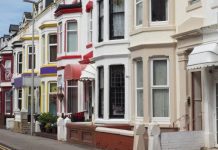The work in construction areas has become easier with modern equipment or tools. The more invention we experience, the less labor we will need on the job site.
Nowadays, concrete delivery with a pump is popular among contractors. Well, this job needs pumped concrete for the most satisfactory outcomes.


Well, in this article, we have mentioned the work of pumped concrete, its types, needs, and advantages. Further, this guide will clear your concept regarding pumped concreting. Take a look!
Understand The Term Pumped Concrete
Concrete pump is a tool that delivers concrete at the highest heights and hard-to-reach places. This tool is used when a huge amount of concrete is needed at heightened places. Further, other means of transportation in that area would not be easy to do.
For decades, concrete pumps have been used by contractors on the job site. However, with advancement, a huge amount of concrete could be transported easily by pumping by pipelines over appreciable distances.
A pumped concrete comprises a hopper in which the concrete discharges from a mixer. In return, it feeds the concrete pump and then transfer it to pipelines by which concrete gets delivered.
Two Types Of Pumped Concrete
You can find two different types of concrete pumps used for transporting. The first one is direct-acting concrete pumps, and another is squeeze-type concrete pumps.
1. Direct Acting Concrete Pumps
The first type of the concrete pumps is the direct-acting, semi-rotary valves, and horizontal piston-type in shape. Well, the working of a direct- acting pump is very easy.
Firstly the concrete is fed to the pump by gravitational force and partly by suction produced due to the reciprocating movement of the piston (horizontally-acting). Furthermore, the semi-rotary valves close or open alternately. Later the order of 0.08 N/mm² suction pressure is created in the pumping cylinder beneath favorable circumstances.
What Are The Best Suction Conditions?
The suitable suction condition is when the suction pipe’s diameter is the same as the pumping cylinder. So, it helps the concrete to flow unhindered.
Well, concrete has to flow freely over the suction pipe’s full cross-section. Furthermore, make sure it doesn’t create blockages because of oversized aggregates. So, to avoid this situation, the suction pipe’s diameter should be approx 3 times the aggregate size (maximum size) present in the pumped concrete. Therefore the suction pipe’s diameter controls the aggregate’s maximum size. It can be in a given concrete mix to be pumped.
The channel valve opens at the suction stroke process time, and concrete goes to the pumping cylinder. That time the outlet valve remains closed.
In the ‘delivery stroke’ process, the opening valve opens, shuts the inlet valve. The concrete goes to the delivery pipeline. Later the concrete moves in a sequence of impulses, the delivery pipe stays full always. So, the result of 60 m³ per hour can be accomplished in modern pumps by the 220 mm diameter of delivery pipes.
2. Squeeze type concrete pumps
It is a tiny and portable peristaltic kind of pump. Additionally, the collecting hopper feeds concrete by the rotating blades in a flexible pipe connected with a pumping chamber. It is under a vacuum of approx 0.08 N/mm². This vacuum makes sure while rollers squeeze pumps, the shape remains cylindrical. Also, it ensures a continued concrete flow.
There are two rotating rollers fixed on planetary. It helps in concrete delivery with a pump and makes the process seamless. As a result, the speed of 20 m³ per hour can be obtained with a 75 mm diameter pipeline of a squeeze pump.
What Does A Pumped Concrete Needed?
- A good pumped concrete has a recommended slump value starting from 50 mm to 150 mm.
- Furthermore, the cement and water ratio must be low, not too high. For example, if the water ratio is higher, then the water will move fast in the pipe, which might block the concrete aggregates in the pipeline.
- Ensure the pumped concrete is not sticky to touch.
- Also, keep in mind that the concrete doesn’t need to be too dry or too wet.
- The air entrainment admixture is helpful for the transmission of concrete.
Advantages Of Pumped Concrete
A pumped concrete is a fast and efficient working solution at construction sites. Moreover, there are many other perks of click concrete pumping listed below:
- Pumped concrete allows moving vertically and horizontally in a single go. The pump result varies from 30 m³ to approx. 150 m³ in an hour.
- It is one of the topmost solutions for quality. It works as a silent quality control tool that refuses inappropriate, harsh, non-cohesive, and inadequate concrete handling.
- Pumped concrete doesn’t require labor, and work can be done faster with expertise.
- It has high workability, which offers great strength and finishing to concrete-made structures. Also, the pump helps in delivering concrete in inaccessible areas.
- Without any cold joint, mass concreting can be done by pumped concrete.
- The pipeline could be removed and extended easily, and it needs very less space to store.
- With the help of pumped concrete the material can be placed at any place like top of the roof, sharp corners, and hard to reach places.
Closing
So do you need a concrete line pump for efficient working on your construction sites? Hopefully, you might have got a clear idea about the need and perks of using pumped concrete. Now you can wisely choose the right type of concrete pump for your construction work. If you’re looking for the best concrete services in Johnson City, TN, look no further than our experienced professionals at Johnson City Concretepros. We’ll take care of everything for you so you can relax.
Are you filled with any doubts or questions? Well, we would be happy to help you in clearing your doubts. Please write down your insights to us.
Thank you for reading!
















